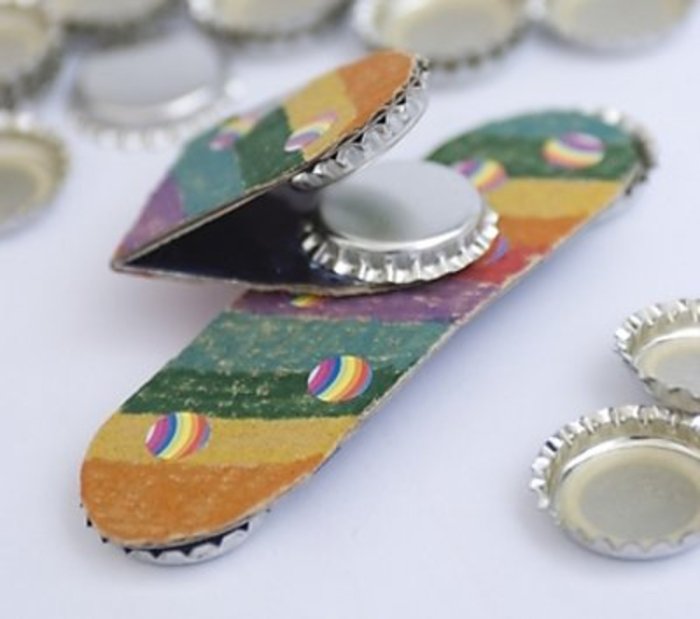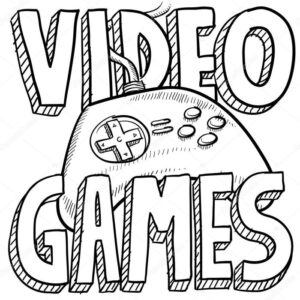
DIY educational board kits are revolutionizing the way we approach learning, blending creativity with education in an engaging format. These kits not only provide hands-on experience but also foster critical thinking and problem-solving skills among learners. With a variety of themes and customizable options, they cater to different age groups and educational needs, making learning fun and interactive.
From science experiments to math challenges and historical explorations, the possibilities are endless. Whether through crafting your own board games or adapting existing ones, these kits encourage collaboration and active participation, ensuring that education transcends traditional boundaries.
DIY Educational Board Kits Overview

DIY educational board kits represent a creative and interactive approach to learning, allowing individuals to engage in hands-on projects that promote critical thinking and problem-solving skills. These kits are designed to foster curiosity and exploration, making them an essential tool for educators and parents alike. By combining fun and learning, DIY educational board kits provide a unique opportunity for learners to grasp complex concepts through practical application.The materials used in creating DIY educational board kits can vary significantly, often incorporating everyday items alongside specialized components.
Commonly used materials include wood, plastic, metal, electronic components, and various crafting supplies such as glue, paint, and markers. The choice of materials plays a vital role in the kit’s educational value, as they can enhance functionality and cater to different creative projects. Here are some typical materials found in these kits:
- Wood: Used for constructing bases and frames, allowing for structural integrity.
- Plastic: Commonly found in movable parts or components that require flexibility.
- Electronic components: Include sensors, motors, and microcontrollers for tech-based kits.
- Crafting supplies: Paints, glues, and markers to encourage artistic expression and customization.
Target Age Groups for DIY Educational Board Kits
DIY educational board kits are designed to cater to a wide range of age groups, ensuring that learners of all ages can benefit from their interactive nature. Different kits target specific developmental stages and skill levels, which is essential for optimizing the learning experience. The following age groups are commonly considered when designing these kits:
- Preschoolers (Ages 3-5): Kits for this group focus on basic concepts like shapes, colors, and simple motor skills. They often include large pieces that are easy to manipulate.
- Elementary Students (Ages 6-10): Educational kits for this age range delve into subjects like basic mathematics, science experiments, and introductory programming, using age-appropriate challenges.
- Tweens and Teens (Ages 11-17): These kits often explore more complex topics such as robotics, electronics, and engineering principles, encouraging advanced problem-solving and critical thinking skills.
Types of DIY Educational Board Kits
DIY educational board kits are an engaging and interactive way to enhance learning across various subjects. They allow students and enthusiasts to explore complex concepts through hands-on experience. The kits can cater to different age groups and educational levels, making them suitable for classrooms, home education, and even hobbyists looking to expand their knowledge.Many popular DIY educational board kits are available on the market today, each designed to foster creativity, critical thinking, and problem-solving skills.
Here are some notable examples:
Popular DIY Educational Board Kits
Several DIY educational board kits have gained popularity for their unique designs and educational value. These kits often include materials and instructions that allow users to build and experiment with different concepts. Some well-known options include:
- Snap Circuits: A kit that allows users to create electronic circuits using snap-together components, helping to understand basic electronics.
- LEGO Education: Various kits that support STEM learning through building and programming challenges.
- KiwiCo: Subscription kits that cover a wide range of topics, from engineering to art, tailored for different age groups.
- Thames & Kosmos: Science kits that enable users to conduct experiments in chemistry, physics, and biology.
- LittleBits: Electronic building blocks that encourage inventiveness and innovation through modular components.
The themes of DIY educational board kits can greatly influence their educational focus. Here are some popular themes categorized by subject area:
Themes for DIY Educational Board Kits
Focusing on specific themes can help in developing a deeper understanding of various subjects. Below is a list of themes for DIY educational board kits centered on science, math, and history:
- Science:
- Physics and Mechanics
- Chemistry Experiments
- Biology and Ecosystems
- Astronomy and Space Exploration
- Math:
- Geometry and Shapes
- Probability and Statistics
- Algebraic Concepts
- Measurement and Data Analysis
- History:
- Ancient Civilizations
- World Wars and Conflicts
- Important Historical Figures
- Cultural Heritage and Traditions
Designing a custom DIY educational board kit can be an exciting process that caters to specific educational needs and interests. The design process involves several steps to ensure the kit is effective and engaging.
Process of Designing a Custom DIY Educational Board Kit
Creating a tailored DIY educational board kit begins with identifying the target audience and the educational objectives you wish to achieve. Consider the following steps for a successful design:
1. Define the Learning Goals
Determine what concepts or skills you want the kit to teach. This could range from basic principles in science to complex historical timelines.
2. Select the Materials
Choose appropriate materials that are safe and engaging. This could include interactive components like circuits, manipulatives for math, or visual aids for history.
3. Develop Instructions
Create clear and concise instructions that guide users through the assembly and learning process. Include diagrams or illustrations to enhance understanding.
4. Test the Kit
Before finalizing the kit, conduct a test run with a target audience. Gather feedback to make necessary adjustments, ensuring the kit is effective and enjoyable.
5. Pack and Present
Design attractive packaging that highlights the educational value of the kit, making it appealing to both educators and learners.In summary, the development of a custom DIY educational board kit is a comprehensive process that involves thoughtful planning and execution, ultimately aiming to facilitate engaging and meaningful learning experiences.
Integration of Games with DIY Educational Board Kits
Integrating games into DIY educational board kits can significantly enhance the learning experience by making education interactive and engaging. The flexibility in design allows educators and learners to customize games that align with specific educational goals, thereby fostering both creativity and critical thinking. This section dives into how traditional board games can be transformed into enriching educational tools, the significant role card games play, and how online games can complement DIY educational kits.
Adaptation of Traditional Board Games
Traditional board games offer a wealth of opportunities for adaptation into DIY educational board kits. By reworking the rules and objectives, educators can create a learning-centric version of popular games. For instance, a classic game like Monopoly can be modified to teach economics, budgeting, and strategic planning by assigning properties relevant to educational content or local landmarks. Another example is Scrabble, which can be tailored to enhance vocabulary in specific subjects like science or history by incorporating thematic word lists.
- Monopoly: Adapt this game to reflect economic principles or historical events.
- Chutes and Ladders: Use it to teach math concepts or basic life skills where climbs represent rewards for correct answers.
- Connect Four: Modify the game to teach patterns, sequences, or teamwork by using different colored pieces to represent various subjects.
Role of Card Games in Educational Value
Card games provide an effective way to enhance educational value within DIY kits, as they can be easily customized and played in various formats. They promote critical thinking, strategy, and quick decision-making, which are essential skills in both academic and real-world scenarios. For example, creating a custom set of flashcards that cover terminology in science or math can facilitate peer-to-peer learning.
“Card games effectively engage learners, encouraging collaboration and discussion around educational content.”
Incorporating elements like point scoring or timed rounds can add a competitive aspect, further motivating students to participate actively in their education. Some popular examples of card games that can be adapted include:
- Uno: Use it for learning numbers, colors, and even language skills through themed decks.
- Go Fish: Modify with educational questions or terms that players must answer to make a match.
- Flashcard War: A competitive game that can be created around math problems or vocabulary words.
Complementary Online Games
Online games have emerged as a valuable resource that can complement DIY educational board kits by providing an additional interactive layer to learning. These digital platforms can facilitate group play, challenging learners to apply their skills in real-time scenarios. Integrating online platforms like Kahoot! or Quizlet can enrich the learning experience as they provide quizzes and competitive games that reinforce concepts covered in the DIY kits.
Furthermore, many educational websites offer game-based learning that aligns with curriculum standards, thus providing a seamless integration with physical kits. To effectively utilize online games alongside DIY kits, educators can:
- Incorporate quizzes: Use online quiz platforms to assess understanding and mastery of the topics covered in the board kits.
- Encourage collaboration: Use multiplayer games that require teamwork, helping to build social skills while learning.
- Monitor progress: Utilize analytics from online games to track student improvement and engagement over time.
Ultimate Conclusion

In conclusion, DIY educational board kits are an innovative way to enhance the learning experience, combining fun with educational value. They empower learners to engage actively in their education while developing essential skills for the future. By integrating games and creativity, these kits make learning not just a task but an enjoyable adventure.
FAQ Overview
What age groups are best suited for DIY educational board kits?
DIY educational board kits are designed for a variety of age groups, from preschoolers to adults, with themes and complexity tailored to different learning levels.
Can these kits be used in a classroom setting?
Absolutely! DIY educational board kits are excellent for classroom use, promoting teamwork and interactive learning among students.
Where can I find DIY educational board kits?
You can find them online on platforms like Amazon or specialized educational websites, as well as in local toy and craft stores.
Are these kits customizable?
Yes, many DIY educational board kits can be customized to fit specific educational goals or themes, making them versatile for various learning environments.
How do DIY educational board kits enhance learning?
They enhance learning by providing hands-on experiences, fostering engagement, and allowing learners to explore concepts interactively.





